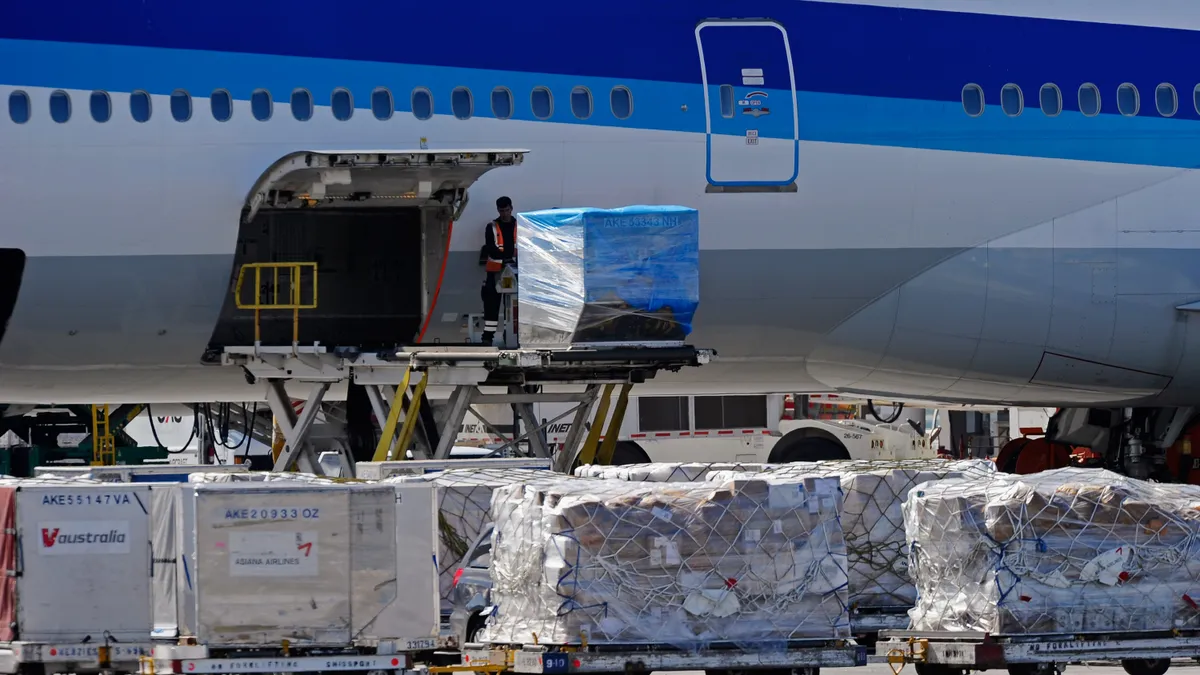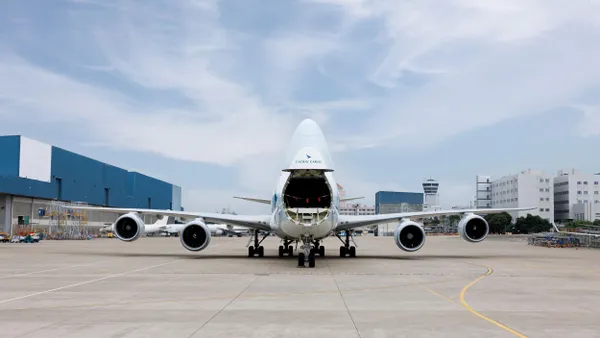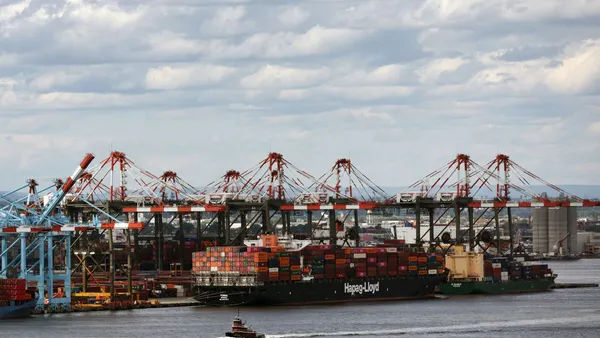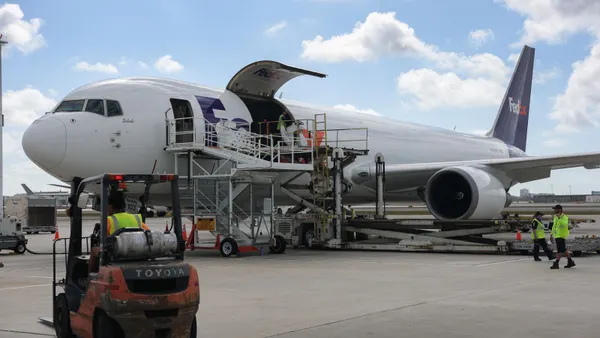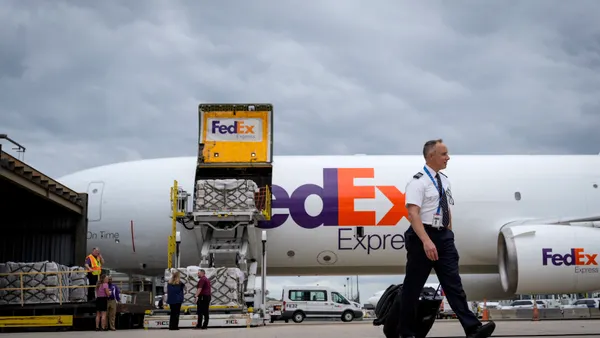Dive Brief:
- Air freight spot rates dropped in June as capacity outstripped demand for the first time in 19 months and tariff policy concerns swirled, Xeneta reported July 4.
- The global air cargo spot rate in June fell for the second consecutive month, tumbling 4% year over year to $2.50 per kilogram. Rates from Southeast Asia to North America were down 11% YoY to $4.79 per kilogram, while prices from Northeast Asia to North America rose 8% YoY to $4.72 per kilogram.
- “It’s wrong to think falling air cargo rates on key trade corridors automatically represent a boon for shippers,” said Chief Airfreight Officer Niall van de Wouw. “With weaker consumer confidence, low rates are little comfort when underlying demand is deteriorating.”
Source: Xeneta
Dive Insight:
Despite recording a 3% YoY bump in air cargo demand during the first half of 2025, the industry expects a “less rosy outlook for the remainder of the year” due to looming country-specific tariffs and changes to the U.S. de minimis exemption, Xeneta reported. The uncertainty is not only impacting rates but clouding forward-looking demand.
“The air cargo market is losing altitude amidst so much uncertainty,” van de Wouw said. “For consumers who were already under severe financial pressure from the rise in the everyday cost-of-living, the added cost of tariffs means they are more likely to think twice about buying many of the types of goods which are exported and imported by air.”
The Trump administration’s temporary suspension of country-specific tariffs is set to lift Aug. 1, with some rates differing from the original levies President Donald Trump first announced in April.
“We are starting to see the longer-term effects of all this uncertainty because a lot of damage has been done,” said van de Wouw. “This might be the new reality for the foreseeable future as the industry is facing a much more challenging second half of the year.”
Industry uncertainty has also bled into peak season tendering as shippers adjust procurement strategies, per Xeneta. The share of mid-term contracts of three-to-six months, for instance, saw an 8 percentage point YoY increase, primarily at the expense of annual or longer-term agreements.
However, compared to Q1, the share of three-month contracts dipped by 12 percentage points, meaning “some tenders earlier in the year proceeded out of necessity, particularly for shippers who place a premium on service reliability,” Xeneta said.
Freight forwarders also remained cautious in June, with 46% of procured volumes rooted in the spot market. Xeneta said the decision may mean that forwarders expect rates to fall further.
“Their wait-and-see approach favours flexibility over long-term commitments - for now,” Xeneta said.
Editor's note: This story was first published in our Logistics Weekly newsletter. Sign up here.



